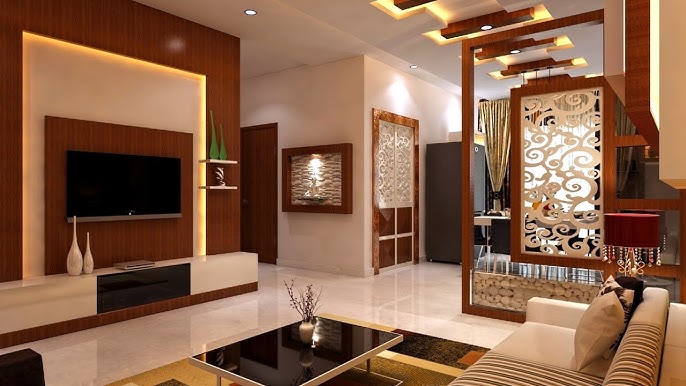Experience miami luxury interior design crafted by experts.
Experience miami luxury interior design crafted by experts.
Blog Article
Transform Your Home With Vital Principles of Interior Decoration and Appearances
The art of changing your home via the essential principles of interior design and visual appeal requires a thoughtful method that harmonizes color, balance, and spatial awareness. By understanding the impact of shade concept and the value of appearance and patterns, one can develop areas that are not only visually appealing but additionally deeply individual. Accomplishing this balance includes greater than mere decor; it incorporates a calculated plan and a keen understanding of how each component connects within an area. As we check out these fundamental ideas, think about how they could redefine your understanding of home and individual expression.
Recognizing Shade Concept
Understanding the concepts of shade theory enables developers to develop spaces that resonate psychologically with occupants while satisfying useful needs. Each category plays a vital duty in establishing harmony within an area.
The emotional influence of colors is profound; warm colors such as reds and oranges stimulate power and warmth, while amazing tones like blues and environment-friendlies advertise calmness and tranquility. The usage of corresponding shades boosts visual rate of interest, developing striking contrasts that can boost a room's charm.
Neutral shades, on the various other hand, act as a flexible background, permitting various other layout components to beam. It is necessary to consider aspects such as lighting and the area's objective when picking a shade scheme, as these can alter the assumption of colors throughout the day.
Inevitably, a well-considered color design can change a room, cultivating a sense of comfort and design that lines up with the inhabitants' preferences. Mastery of shade concept is, as a result, a crucial skill for any interior developer intending to produce harmonious and welcoming settings.
Accomplishing Balance in Design
Just how can designers attain a sense of equilibrium in their areas? Achieving equilibrium in design is essential to creating unified interiors.
Unbalanced balance, on the other hand, relies upon varying elements that still accomplish a natural look. This strategy permits even more dynamic and informal setups, offering passion while maintaining balance. By carefully choosing differing dimensions, colors, and appearances, designers can produce an aesthetically compelling area that really feels balanced yet energetic.
Radial equilibrium stresses a central focal point with components radiating outside. This design is commonly seen in circular designs, where furnishings and style create a cohesive border that attracts the eye internal.
Ultimately, accomplishing equilibrium calls for thoughtful factor to consider of scale, proportion, and the connections between aspects. Architecture Firm. By masterfully using these equilibrium concepts, developers can transform spaces into environments that feel both visually pleasing and functionally harmonious, improving the general experience for passengers
Relevance of Spatial Recognition

A keen sense of spatial understanding enables developers to recognize focal factors within an area, assisting the audience's interest to crucial attributes while keeping a total feeling of unity. It additionally assists in the strategic placement of lighting, which can significantly influence the perception of space and mood. Recognizing spatial connections allows the designer to provide to the details requirements of residents, guaranteeing that each area offers its designated function without compromising aesthetics.
Inevitably, spatial understanding is important for optimizing the potential of any kind of indoor space. By carefully taking into consideration the interplay between measurements, layout, and feature, designers can create atmospheres that not only fulfill functional requirements yet likewise stimulate a sense of convenience and appeal, enhancing the total living experience.
Incorporating Appearance and Patterns
Accepting a varied series of appearances and patterns can dramatically boost the visual and responsive charm of an indoor space. The critical use numerous materials-- such as timber, steel, material, and rock-- creates deepness and rate of interest, making an area feel a lot more inviting and dynamic. Combining smooth surface areas with harsh textures can establish an equilibrium that draws the eye and engages the detects.
When including patterns, consider both scale and repeating. Big patterns can function as focal factors, while smaller, subtle styles can enhance other elements without overwhelming the room. Layering patterns, such as pairing flower cushions with striped throws, includes intricacy and a feeling of harmony if executed thoughtfully.
It is additionally crucial to maintain a natural shade scheme, ensuring that appearances and patterns function with each other as opposed to contend for interest. By choosing a few vital appearances and patterns, you can create an unified aesthetic that mirrors your individual style while enhancing the overall setting of the space. Eventually, the careful incorporation of these components can change a mundane space right into an advanced atmosphere rich with personality and warmth.
Personalizing Your Room
Producing an area that reflects your individuality is important to our website achieving an absolutely linked here welcoming environment. Customization in interior decoration allows you to infuse your one-of-a-kind style and passions into your home, changing it from a simple shelter into a refuge that talks to that you are. Begin by picking a shade combination that resonates with your emotions-- bold shades can energize, while soft tones use peace.
Incorporate art work and decoration that show your passions, whether it be traveling, nature, or abstract ideas. Presenting personal collections, such as books, photographs, or souvenirs, can stimulate cherished memories and develop focal factors within a space. Additionally, think about personalizing functional pieces, like upholstered furnishings, to align with your aesthetic preferences.

Final Thought
In verdict, the improvement of a home via the useful link important concepts of interior decoration and aesthetics requires a detailed understanding of shade theory, balance, spatial understanding, texture, and personalization. Each component adds dramatically to producing a harmonious and useful living environment - luxury interior design. By attentively integrating these concepts, individuals can boost the aesthetic appeal and emotional vibration of their spaces, ultimately fostering a home that shows special identifications while supplying convenience and usefulness
Report this page